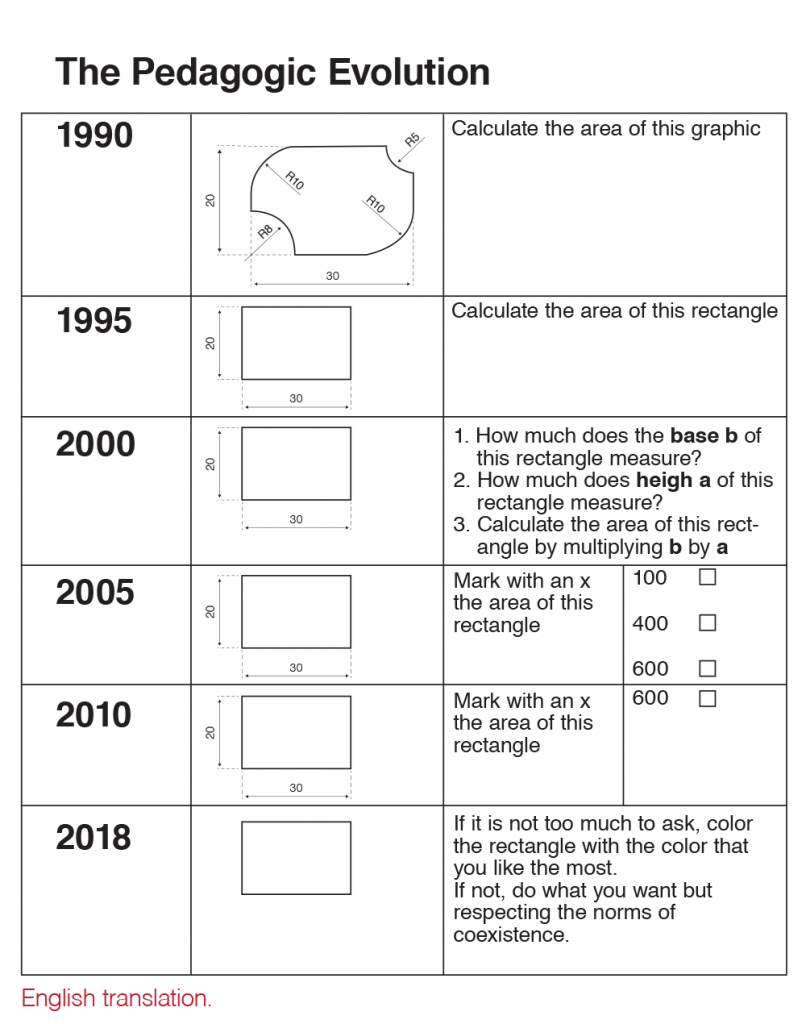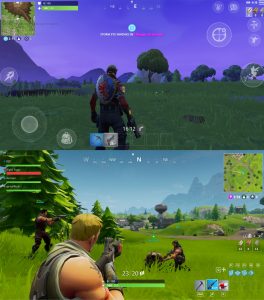A DIGITAL ENCOUNTER
While scrolling aimlessly within Facebook’s infinite timeline I came across a non-editorialized re-share of an image titled ‘The Pedagogic Evolution’.


Without much reflective thought I smirked and continued along the amalgam of updates, news, images, and ads. I made nothing more of it.
A few days later, in a conversation about underwhelming student progress during mid-semester project reviews, I began to think back on the uncredited, decontextualized image[1]and the message it portrayed.
IN SEARCH FOR CONTEXT
I went back to the post. Re-shared by a seasoned architecture academic, the image had sparked a niche conversation amongst design professors where a one-sided thematic approach seemed to validate the image’s message: academia is asking less of its students.
Why has this idea become widespread? A look at the original post from which the share was enabled[2], reveals a heavily inclined thread of commentary. It went something like this:
“I have been I teaching for 30 years, at various levels, and I can assure you that students are now less capable and avoid complicated issues at all costs.”
“The success of an educational system is to present a CHALLENGE to the student, so that it develops: ‘analysis,’ ‘synthesis,’ ‘abstract thinking,’ ‘discipline,’ ‘responsibility,’ and other mental and personality processes. None of this is being taught today.”
Surely, on a pragmatic level, design students now have more tools—analog and digital—that minimize the amount of manual labor (sorry Letraset!). Perceptually it seems that they are carrying out less work, but new tools have empowered them to innovate, working with more diverse topics and executing more complex tasks than ever before. To name a few, video editing software, 3D printers, CNC cutters, and more recently, Photoshop VR have enabled them to tackle old problems (under a different light) and new complexities that prior generations could have only dreamt of.
NOT ALL COMPLEXITY IS CUT FROM THE SAME CLOTH
The current generation of students manages and multi-tasks at higher and deeper levels of social, cultural, political, and technological complexity than those who came before them. The digitalization of every aspect of their lives (and its portable access) have transformed them into curators, managing and deciphering asynchronous communication, social profiles, gaming, the web, family dynamics and studying, all from one place. Life has never been one-dimensional, but I believe that the current digitally native generation experiences it at a higher dynamic emotional range.

Take the current popular game Fortnite. It lives on the premise “more is more” as it builds an experience on a complex system of dense features, a sensory rich UI, and a collaborative framework that requires cognitive attention to decipher, understand, and use.
Arguably, it is in the traditional classroom that the delivery of content has become the simpler, less dynamic, and unidimensional space, disengaging students from active interest or participation. Our job, as professors is to empathically understand how to communicate those bits of critical information through appropriate channels that connect with our students.
As designers, our disciple’s DNA offers us an opportunity to enhance the learning experience. We can simultaneously tackle (and balance) content, form and function, leveraging a multidimensional pedagogic approach that weaves into a cohesive classroom narrative. The crafting and inclusion of new skills and perspectives, beyond traditional college-level design education, will help us anticipate and prepare for the future. We will be empowered to realign curricular content with emerging models of practice that will shape our students’ relationship with their own careers, but also model more attractive learning spaces that speak to their own realities. With just a bit of effort, we will all be part of a pedagogic [d]esign evolution that will tilt the scales of our academic appreciation.

Alberto freelances from San Juan, Puerto Rico, collaborating with clients in the planning and execution of design focused business strategies. With an academic focus on design, anthropology and photography, he crafts brands, exhibits, way-finding systems, publications and architectural collaborations of an interpretative nature. Today he serves as a board member of AIGA’s Design Educators Steering Committee.